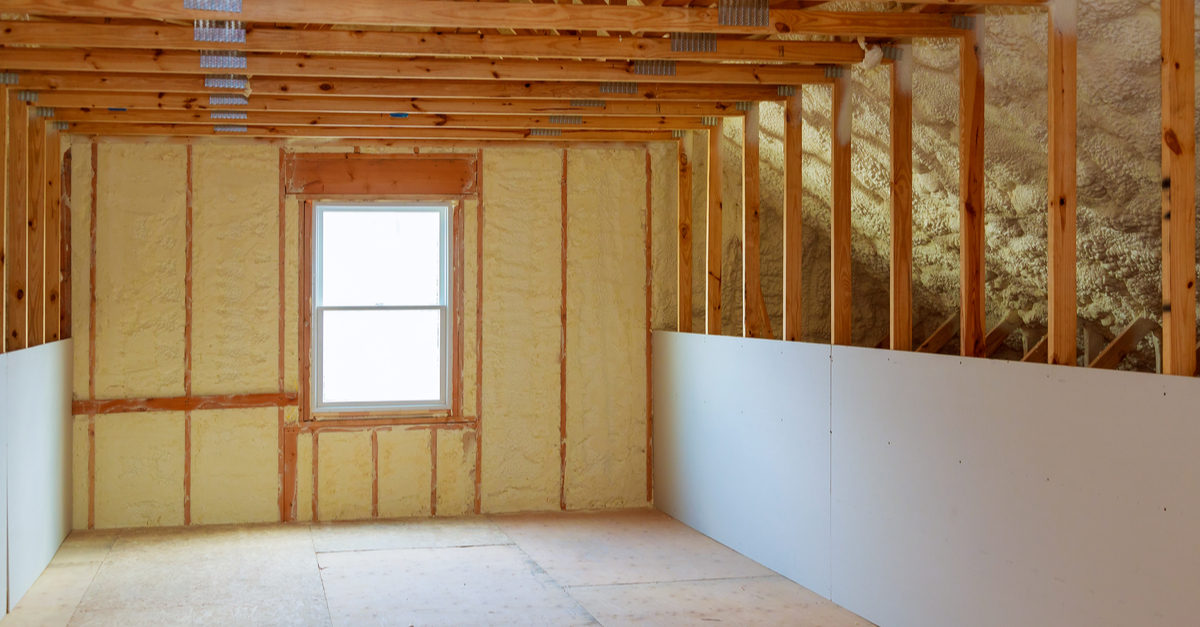
aKcdSvMHt1p/bIgDY4RVDV/U6wLa0SSns5gjFHx2qi4=_16e1d6b90a4:2a8ae44:235c00fd
Different Types of Spray Foam
Here's what you need to know about spray foam insulation.

Advantages of High-Pressure, Two-Component SPF
High-pressure systems can be used to spray all three types of spray polyurethane foam. Of the three types of spray foam used in building insulation and weatherization, the high-pressure, two-component spray foam is most likely to be used on larger projects such as a new building construction or renovations. SPF applied with a high-pressure system tends to adhere tightly to the entire structure which helps avoid sagging or detaching from its position. It can also provide a seal against air and insects.
Learn more about what to expect when having high-pressure SPF installed in your home.
Advantages of Low-Pressure, Two-Component SPF
Low-pressure spray polyurethane foam is typically applied around ductwork, electrical or piping penetrations, rim joists and roof repairs. This type of foam is used to insulate and seal small to mid-sized areas in homes and other buildings that are too large or extensive for smaller, insulating foam sealants. It is especially effective in weatherizing older homes that have many cracks, gaps and wall penetrations around doors, window frames, pipes and plumbing lines. The air- and heat-leakage improvements can be quite dramatic after a low-pressure SPF application, which can result in greater efficiencies.
Because SPF helps seal out air from joints, seams and cracks, low-pressure, two-component foam insulation can be used to enhance already-installed insulation. The foam application will fill seams, gaps and other small openings around installed insulation. This helps limit both air and moisture from entering and circulating inside the building.
Learn more about what to expect when having low-pressure, two-component SPF installed.
Safety Factors to Consider when Applying Two-component SPF
The material is called two-component foam because the chemicals used to make the foam are stored in two separate containers. When sprayed, the chemicals are mixed together and a spray gun delivers the resulting foam.
Low-pressure foam is usually delivered at less than 250psi, whereas high-pressure foam is usually delivered at 1000psi or more.
Both high and low-pressure, two-component spray foam are applied by professional contractors who are trained to use and apply SPF with the required equipment (protective gear, full eye protection, respirators, and gloves). Contractors should follow the ventilation recommendations by the product manufacturer to avoid overexposure through inhalation, and instruct those without protective gear (homeowners or building occupants) to stay away from the work area during exposure times and to not return until instructed by the professional contractor.
Advantages of Insulating Foam Sealant, One-Component Foam
Insulating foam sealant, also known as one-component foam or foam-in-a-can, is generally used for small projects, such as sealing gaps and cracks. This foam is available to both professional spray foam applicators and homeowners. It’s popular with users seeking to use less energy and conserve resources.
One-component foam sealant bonds readily to wood, masonry, metal, glass and many plastics. It sets and cures quickly, hardening into a protective shield that helps prevent air from crossing the foam barrier.
Typical uses for insulating foam sealant include:
- Filling gaps and cracks around window and doorframes
- Closing gaps around outside-wall penetrations made by gas lines, water faucets or dryer-vent hoses
- Filling gaps inside the home caused by electrical line or HVAC vent penetrations
Homeowners can buy cans of one-component foam at hardware and home improvement stores. When applying insulating sealant, it’s important to follow the manufacturers’ recommended usage instructions for safe applications and personal protection. Once the foam is set, it can be sanded, trimmed, painted or stained using appropriate precautions.
Safety Factors to Consider when Applying Insulating Foam Sealant
Installations present a number of considerations and recommendations in order to provide a safe environment for application and to avoid overexposure through inhalation. Appropriate ventilation and protective gear is required when applying insulating foam sealant. Installers should wear protective gear, often referred to as “personal protective equipment” (PPE), such as protective clothing, gloves, and eye protection. Direct skin contact should be avoided, and recommendations by the product manufacturer should be followed.
Learn more about safety considerations when installing foam sealant in your home. Information found on this site is meant to be an informative resource, not a substitute for the product manufacturers’ instructions and recommendations.